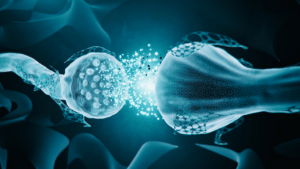by Vanita Dahia
Pain is an inevitable outcome of many chronic inflammatory diseases, completely destroying peoples’ quality of life.
More than a fifth of codeine users are now stock piling their stash of codeine based pain medication in light of the new regulations.
On February 1st 2018, over the counter pain medication from pharmacies will no longer be available. You will need to get a prescription from a doctor to get some pain relief. The Australian Journal of Pharmacy have reported stockpiling of pain pills across Australia.
https://ajp.com.au/news/media-reports-pushed-stockpiling
It is so unfortunate that consumers who legitimately need pain relief are having to jump through hoops to manage their pain. On the other hand, there is a vast majority of the users “hooked” on their pain medication. After all, codeine and morphine are pain relief drugs in the opiate family. Both drugs are found naturally in the poppy plant, Papaver somniferum. Codeine is usually synthesized from a morphine derivative.
Side effects of Codeine
Some commonly used pain management available over the counter includes codeine, paracetamol, antihistamines and ibuprofen which come with their plethora of side effects and adverse reactions.
Codeine use is associated with side effects of:
• drowsiness,
• light-headedness
• dizziness, sedation
• shortness of breath
• nausea, vomiting, stomach pain, constipation
Side effects of paracetamol may include:
• Liver toxicity
• loss of appetite
• nausea, vomiting, stomach pain
• sweating
• confusion , weakness
Side effects of Ibuprofen may include:
• upset stomach, mild heartburn, nausea, vomiting;
• bloating, gas, diarrhoea, constipation
• dizziness, headache, nervousness
• mild itching or rash
• ringing in the ears
Natural Pain Solutions
Chronic pain and inflammation ruins lives, but it doesn’t have to be this way – our bodies are designed to repair and recover.
Inflammation is not the root of evil
Inflammation underlies a myriad of conditions ranging from aches, pains, arthritis, migraines, headaches, and more complex chronic conditions including cardiovascular disease and cancer.
Pain has an “off-switch”
Inflammation is a natural response to immunological challenge. The inflammatory process is naturally self-limiting via mechanisms that involve inflammatory cytokines and transcription factor, Nuclear-Factor kappa-B (NFkB). Pain nociceptors can be modulated with both pharmaceutical and natural medicines. Many adjunctive physical therapies can also be used such as acupuncture, chiropractic, myotherapy etc to name a few.
Drivers of Chronic Pain and Inflammation
Chronic pain and inflammation is the result of many disease processes. For example, oxidative stress, infection, tissue damage, insulin resistance, allergens, leaky gut, and dysbiosis are all stressors that promote chronic inflammation and disease.
One of the great advantages of phytochemicals, unlike many pharmaceuticals, is that they do not target only one enzyme or pathway; but have gentler effects on a broader spectrum of targets to produce healthy therapeutic outcomes. The overall action of these herbs is to provide a broad range of anti-inflammatory actions that are safe and effective for the long-term control of chronic inflammatory conditions.
Fortunately, a number of powerful natural substances have the capacity to alleviate pain effectively without the side effects experienced with OTC pain medication.
Effective natural agents for pain relief
Magnesium is well-proven for the management of pain. Magnesium exerts muscle-relaxing actions via multiple mechanisms and is a natural glutamate antagonist. Glutamate is involved in central sensitisation and pain amplification. Not only is it an NMDA antagonist, thereby reducing glutamate excitotoxicity, but it also reduces nociceptor stimulation.
Herbal Medicines
Herbal medicine for pain should address the underlying cause of pain. For unilateral throbbing pain, specific herbs are chosen to respond to pain threshold of primary and secondary nociceptor neurons in blood vessels.
Herbs may be classified into categories based on mode of action
Herbal pain relief – Californian poppy, Jamaican Dogwood, Kudzu, Pukatea, Willow Bark, Wood Betany
Nerve tonics – Lions Mane, Chamomile, Lavender, Lime Flowers, Magnolia, Passionflower, Qood Betany, Zizuphus
Stimulants – Holy Basil, Shisandra
Relaxants – Californian Poppy, St Johns Wort
Adrenal adaptogens – Rhodiola, Withania
Immune adaptogens – Astragalus, Cordiceps
Inflammation modulators – Feverfew, Ginger, Ginkgo, Nettle Leaf, Saffron, Tumeric, Willow Bark
Muscular spasmolytics (for muscle aches and pains) – Cramp Bark, Hops, Jamaican Dogwood, Kava, Passionflower, Peony, Valerian
Herbs worth considering for Pain
Corydalis Ambigua (corydalis) which exerts analgesic effects in both inflammatory and neuropathic pain. Corydalis has significant opioid receptor agonist activity and exerts its effects within the central nervous system, in part, by acting on monoaminergic neurotransmitters including dopamine, noradrenaline and serotonin.
Eschscholzia Californica (California poppy) also relieves pain and promotes calm sleep via support of GABA. (3) California poppy has been traditionally used to get a restful night’s sleep in Western herbal medicine. Non-habit forming, it is suggested that California poppy’s effect on nervous system function may be due to its ability to bind to GABA receptors and activate them.
Devils Claw exerts antinociceptive effects
Jamaica dogwood may alleviate pain by supporting local blood flow and inhibiting inflammatory enzymes
Herbal combination proven to be better than Prescription medication for pain.
Tumeric and Boswellia has been shown to be more effective than the COX-2 inhibitor for osteoporosis symptoms, particularly pain, walking distance and joint tenderness and as effective as the COX-2 inhibitor for crepitus and range of movement. This study showed that 92.85% of patients treated with Turmeric and Boswellia demonstrated an improvement or had no joint line tenderness compared with 78.57% of patients given the COX-2 inhibitor.
Custom Compounded Herbal Pain Management
Herbs work synergistically with each other to alleviate pain. A combination of specific herbs can potentially manage pain from a number of mechanisms based on their properties.
Contact us to assess your pain and custom compound your pain medication for you.
References
1. Yousef AA, Al-deeb AE. A double-blinded randomised controlled study of the value of sequential intravenous and oral magnesium therapy in patients with chronic low back pain with a neuropathic component. Anaesthesia. 2013 Mar; 68(3):260-266.
2. Ingram SL. Pain: novel analgesics from traditional Chinese medicines. Current Biology. 2013;24(3):R114-R116.
3. Rolland A, et al. Neurophysiological effects of an extract of Eschscholzia californica Cham. (Papaveraceae). Phytotherapy Research, 2001; 15:377-381.
4. Gagnier JJ, Chrubasik S, Manheimer E. Harpogophytum procumbens for osteoarthritis and low back pain: A systematic review. BMC Complementary and Alternative Medicine. 2004;4
5. Kizhakkedath R. Clinical evaluation of a formulation containing Curcuma longa and Boswellia serrata extracts in the management of knee osteoarthritis. Molecular Medicine Reports. 2013;8:1542-1548.





